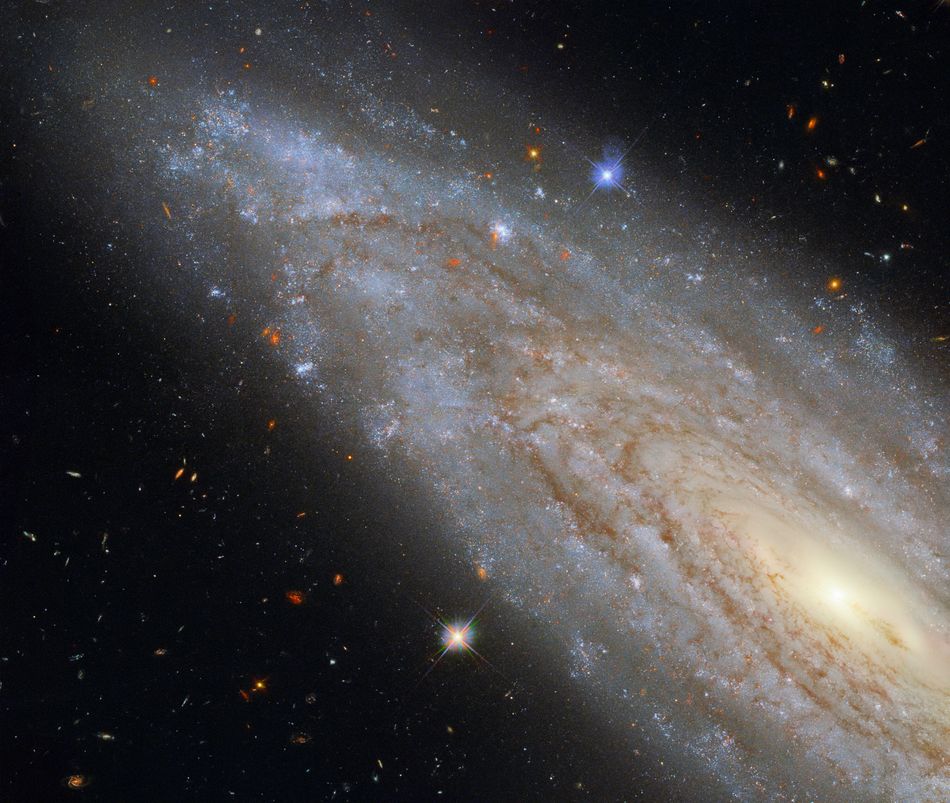The Hubble Space Telescope captured a brilliant image of spiral galaxy NGC 3254, which has a particularly luminescent and active core emitting as much energy as the rest of the galaxy combined.
NGC 3254 is classified as a Seyfert galaxy. Seyfert galaxies are defined by their extremely active centers. Why are they so active? They each have a supermassive black hole in them.
The intense gravitational pull of supermassive black holes whip gases, dusts, stars, planetary bodies, and other material into a frenzy of high-speed collisions as they’re yanked inward. As all that space stuff rips apart, smashes together, and spaghettifies, temperatures soar.
While it’s true that the gravitational pull of black holes is so strong that even light can’t escape, black holes could be described as messy eaters. As they eat (or “accrete”) material, they also expend energy, which blasts outward as heat and light.

The full image of NGC 3254 in its bright, beautiful glory.
Image: ESA/Hubble & NASA, A. Riess et al.
Hubble’s image of the NGC 3254 galaxy is a composite of both visible and infrared light spectrums, which allows us to get a clear, detailed visual of what’s going on. If other spectrums were used, the core would look even brighter.
NGC 3254 spins out in space roughly 118 million light-years away from Earth. It was first documented by astronomer and composer William Herschel in 1785.
The bright blue light that stands out in the top center of the Hubble image, toward the outer rim of the galaxy’s spiral, is a star-exploding supernova first spotted in 2019. Although we’re just seeing it now, the supernova actually happened roughly 118 million years ago.
While NGC 2154 is a spiral galaxy similar to our own Milky Way, it is much more active. The Milky Way is not classified as a Seyfert galaxy. Only about 10% of galaxies may fit that Seyfert description — which may seem low, but there are billions, perhaps trillions of observable galaxies around us. That’s a lot of highly active black holes.
